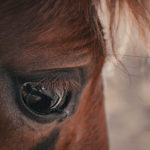By David Blyweiss, M.D., Advanced Natural Wellness
August 20, 2012
- Maybe miners had the right idea
- Cookware conundrums to consider
- What you can learn from the lab
When the link between aluminum and Alzheimer’s hit the news, I flashed back to the many mornings my mother scrambled eggs in her well-worn aluminum pans and shook my head.
Then, the news about Teflon hit, as pet birds dropped like flies when frying pans reached a certain temperature and let off a noxious gas deadly to our feathered friends. And as any miner will tell you, this doesn’t bode well for your safety, either.
Unfortunately, there is no definitive answer to the cookware safety question. Rather, there is a list of pros, cons and considerations.
Here is an update on how those aluminum concerns panned out (sorry – couldn’t help myself!), what to do about Teflon, and what I recommend you use instead…
It’s really not fair.
You go through so much effort to choose healthy food, maybe even buy organic… and then, you’ve got to worry about your cookware, too!
MD Exposes the Hidden Danger to Your Eyes

When your eyesight starts to fail, it's a real problem. Suddenly you can't go to the grocery store... you can't get to the doctor if you have an emergency... you can't meet your friends for dinner…
Your "regular" doctor doesn't have time to keep up with the latest research. And the same goes for eye doctors. They go to school to learn how to fit you for glasses and contacts, but have no way of preventing the damage and loss of eyesight that threatens your freedom and independence.
Let me show you something that explains a LOT about how your eyes work.
In my FREE Special Report, I'll show you a HUGE, untapped resource for your eyes that safely and naturally restores clear, effortless eyesight.
Click here to get started...
And to top it off, there are no clear-cut answers, and plenty of opinions to go around.
Let’s look at aluminum first. It turns out that Alzheimer’s is a much more complex disease than we originally thought, and aluminum is not the cause, and may not even be a significant factor.
However, the research does show aluminum levels are extraordinarily high in many of us, partly because we get it from so many environmental sources.
And at high levels, it can be toxic and cause numerous health problems.
So as a result of the bad press, manufacturers introduced anodized aluminum cookware as a safer alternative. An electro-chemical process seals the aluminum. And that ensures it won’t leech out into food, even at high temperatures. Plus, it’s a non-stick, scratch-resistant cooking surface, which is what most cooks want. This adaptation is considered generally safe, but there isn’t a lot of research to back up safety claims.
Next, you’ve got Teflon, the non-stick coating for cookware known by chemists as polytetrafluoroethylene (PTFE). There are actual bird death diaries online with heartbreaking accounts of birds dying when Teflon-coated cookware is overheated.
And not all accounts seem reliable (I just read one with 40 birds flying loose around the house). But the problem here is self-evident.
According to the Environmental Working Group, a pan can “reach 700 degrees Fahrenheit in just 3-5 minutes, releasing 15 toxic gases and chemicals, including two carcinogens.”
Now, that’s not just a bird killer, that’s a people-killer.
Are You Suffering From...
- Love handles and a pot belly
- Romance that isn't what it used to
- Forgetfulness and inattention
- Low (or no) strength and endurance
- A sex drive that's shifted into neutral...or worse
If so...you may have Mature Male Burnout. Click here to discover more about this unique condition and what you can do about it.
So while the levels may be considered “safe” by the regulating bodies, my recommendation is that you take a cue from miners… If the birds are biting the dust, you can’t be far behind.
I’d recommend you ditch the Teflon. And if you haven’t by 2015, DuPont is going to do it for you. They’ve announced plans to phase out sales of Teflon by then.
In the wake of the Teflon controversy, a new non-stick option is on the market called Thermolon, which is often referred to as GreenPan. It’s being marketed as an eco-friendly cookware option. It uses nanotechnology and silicon, so it doesn’t have the same risks as Teflon. And while it is relatively new – with a limited track record in the research department – it is considered safe for birds.
Which is a step in the right direction.
But personally, I’m going to wait for more data. So, if you need a workout plan… and a way to cook, there is always cast iron cookware.
Seriously, the weight of these can be a problem if you have any kind of arthritis in the hands or wrists, as they can be quite heavy. But otherwise, they are a relatively healthy option. Yes, the iron will leech into your food. And for most people, this isn’t a problem.
But, for small children and post-menopausal women – or anyone who already has a lot of iron in their diet – cooking with cast iron may not be the best choice.
Stainless steel is another possible option to consider. It contains a mixture of metals, such as nickel, chromium, molybdenum, and yes, sometimes aluminum. The problem is you never quite know what the mixture is, and whether or not it might be harmful. If you’re going to go with stainless steel cookware, be sure it is high-grade surgical steel. It will cost you more… but it’s worth it.
And last but not least…
Have you ever wondered why glass is used for laboratory testing most often? Because it’s non-porous, does not react with its contents, and can sustain high temperatures if it’s the right thickness.
Which makes it perfect for cookware, too.
Ceramic, stoneware and enameled cookware share some of the same qualities, and now that lead is no longer used to process these materials, they’re considered safe.
The main reason many people shy away from glass and ceramic cookware is durability. Glass and ceramic can break. And broken glass is definitely not the safest or most desirable kitchen item!
However, glass and ceramic cookware is making a comeback, as is stoneware, which is largely used in the over rather than on the stovetop. And as far as health and safety, they’re the best options for my money. Just be sure they are lead-free, and the right heat resistance for your intended use when you make your purchase.
Only you know your cooking needs and preferences.
A chef-level cook is likely to have very strong opinions about which type of cookware makes a better omelet. And an environmentalist will have an opinion about the material. And a bird lover would like to still have a bird – singing in its cage – by the end of the meal.
But at least knowing the pros and cons of each option helps you make an educated decision, based on your needs and preferences.
Now, when they make cookware that makes dinner for you, it better be safe and healthy to use… because that’s the one most of us are waiting for!






